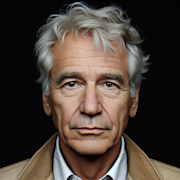The Wild Bunch (1969)

Released in 1969, The Wild Bunch is a classic Western film directed by Sam Peckinpah. Known for its groundbreaking approach to violence and its deep exploration of themes such as loyalty, honor, and the passage of time, this film has become a staple of the genre and a favorite among cinephiles. In this blog post, we will take a closer look at the significance of The Wild Bunch and its lasting impact on cinema.
The Plot
The film follows a group of outlaws led by Pike Bishop (played by William Holden) as they plan one final heist in the border town of San Rafael, Mexico. However, their plans are soon thwarted by a betrayal, leading to a violent and bloody showdown with the Mexican army. As the group tries to escape the authorities, they are forced to confront their own mortality and the choices that have led them to this point.
Themes and Motifs
The Wild Bunch is more than just a typical shoot-‘em-up Western. It delves deep into themes of honor, loyalty, and the consequences of one’s actions. The film challenges traditional notions of heroism and villainy, blurring the lines between the two and showcasing the complexities of human nature.
One of the most prominent motifs in the film is the concept of time. As the Wild Bunch outlaws struggle to adapt to a changing world and a new era of law and order, they are forced to confront their own obsolescence. This theme is reflected in the film’s iconic closing scene, in which the outlaws make their final stand against the Mexican army in a blaze of glory.
Cinematic Innovation
The Wild Bunch is also celebrated for its revolutionary approach to violence and action sequences. Director Sam Peckinpah pioneered the use of slow-motion and rapid editing techniques to create a visceral and intense viewing experience. The film’s infamous shootouts are choreographed with precision and artistry, setting a new standard for on-screen violence in the Western genre.
Peckinpah’s use of imagery and symbolism further elevates The Wild Bunch to a cinematic masterpiece. The film’s stunning landscapes and haunting compositions serve as a backdrop for the characters’ epic journey, highlighting the harsh beauty of the American Southwest and the brutal reality of their world.
Legacy and Influence
Over fifty years after its release, The Wild Bunch continues to inspire filmmakers and audiences alike. Its impact on the Western genre cannot be overstated, as it broke new ground in terms of storytelling, visual style, and thematic depth. The film’s uncompromising portrayal of violence and its examination of complex moral dilemmas have left a lasting impression on cinema.
Countless directors have cited The Wild Bunch as a major influence on their work, from Quentin Tarantino to Martin Scorsese. Its innovative approach to storytelling and its fearless exploration of the darker aspects of human nature have set a high bar for future generations of filmmakers to aspire to.
Conclusion
In conclusion, The Wild Bunch stands as a towering achievement in the history of cinema. Its powerful themes, groundbreaking visuals, and unforgettable performances have solidified its place as a classic of the Western genre. As we continue to revisit this film and unpack its many layers of meaning, we are reminded of the enduring power of storytelling and the ability of film to provoke thought and stir the soul.

Desmond van der Walt
Journalist
More From Classics Authority Movies

Movie
White Heat (1949)

Movie
The Revolutionary Techniques of Classic Cinematic Innovators

Movie
Romancing the Western: Love and Loss in Classic Cowboy Epics

Movie
Beyond the Frame: Classic Movie Directors in Focus

Movie
Film Noir's Femme Fatales: A Closer Look at Classic Female Antagonists

Movie
The Last Picture Show (1971)





